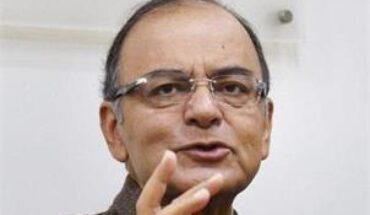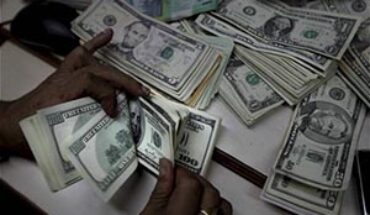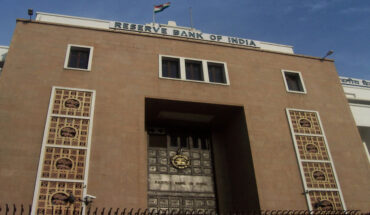by Dr. Harvinder kaur
The ghost of inflation is always a big threat to every ruling party’s economic and political stability, not only in India but in the whole world. Inflation may be beneficial for big corporates in the short run, but it is always harmful and puts a dent in the middle class’s savings and ruins the poor class. The weightage of food items is 47% of the Wholesale Price Index (April 2022) in India.
Although the abundance production of food grains, pulses, and vegetables break all records in the last few years, still their prices are very high and vegetables and fruits are out of the reach of poor men and gulping the savings of the middle class. Food inflation is set to explore new heights (Food, and oil prices push inflation to 8 years high) after2014. The reason behind all this is the increasing fuel prices as the transportation cost of every product is increasing. Some economists suggest that to control inflation govt. should use contractionary monetary and fiscal policies by increasing interest rates and reducing public expenditure but they do not want to see the elephant of inflation in the room. Inflation always doesn’t mean an excess supply of money; it may be because of a shortage of production of goods and services as in Sri Lanka.
After the pandemic, the maximum number of people lost their employment. 52% of people were either with no income or have decreased income. Because of this demand for poor people decreased as they have no money to spend and on the other side cash became king for the middle class. The overall effect was that the aggregate demand decreased in the economy and because of the lack of any demand booster the investors stopped investment and demand for blue-collar and white-collar workers decreased and this multiplied the unemployment in the economy. In Haryana, the unemployment rate was a maximum of about 34% in April 2022 more than the national average.
If income increases the people will demand more, although its immediate effect that prices may increase if income and supply of goods and services will increase simultaneously than overall effect will be that growth and investment rate will increase in the economy.
How to curb inflation :
We have to adopt practical methods instead of traditional methods to curb inflation and methods that are appropriate for the Indian economy as this economy is a developing economy. European economies are developed economies so their methods to control inflation are not suitable for the Indian economy.
We can give boosters to the middle class to spend more with the tools of expansionary fiscal and monetary policy.
By expansionary fiscal policy govt. can increase employment opportunities in the economy and purchasing power of people will increase and demand will also increase and will stimulate investment in the private sector. In this way, two birds will be killed with one stone. A new start-up will do net investment or will use already excess production capacity will produce more, more production can control inflation but the condition is that the prices of raw material and intermediate inputs should remain constant.
For the desired results fuel prices and Agri products Prices should be controlled. We cannot blame the Russia-Ukraine war anymore for rising fuel prices. Farmers should be compensated for low agriculture product prices by giving them more direct benefits or subsidies, as America does. Indian economy is an agrarian economy.
If the aggregate supply of output does not increase proportionately in the short run, this will cause demand-supply imbalances which will lead to demand-pull inflation in the economy, that is, the general rise in the price level.
Demand-pull inflation can occur when there is an increase in any component of aggregate demand, namely, consumption demand by households, investment by business firms, increase in government expenditure unmatched by an increase in taxes (that is, deficit spending by the government-financed by either creation of new money by the central bank or borrowing by the government from the market).
let us assume the government adopts an expansionary fiscal policy under which it increases its expenditure without levying extra taxes to finance its increased expenditure by borrowing from the Reserve Bank of India. Demand-pull inflation can be neutralized by more consumer and capital goods production.
The govt. should decrease the rate of direct taxes to boost aggregate demand as the disposal income of the salaried class will increase and they will spend more and the consumption of one person is the income of others and induced investment increase in the economy. On the other side if govt. does not want to decrease direct taxes and that amount of tax collection should be used for a productive purpose not on extravagant expenditures of the govt.
To illustrate the above point, let us assume that the government adopts an expansionary fiscal policy under which it increases its expenditure on education, health, and defence and finances this extra expenditure by borrowing from the Reserve Bank of India which prints new notes for this purpose. This will lead to an increase in aggregate demand (C + I + G). When aggregate demand for all purposes—consumption, investment, and government expenditure is in the tune of the supply of goods at current prices, there will be no inflation. For a very short period, there can be supply bottlenecks but after some time when the supply of goods will increase because of new investment or use of excess capacity in production, it will be self-corrective. Since inflation is a continuous increase in the price level, not a one-time rise in it. Before full employment, there is a full possibility in an economy like India as it has not reached the level of full employment like developed economies. According to Credit Vidya agency 10%, the higher industrial output can ease retail inflation by 40 bps. Fuel duty cuts by at least Rs 5 per liter are likely to lower 15-20 bps inflation. 1% rise in oil prices could raise WPI by 8 bps. Lastly govt. should use the taxpayer’s money for productive purposes and not for freebies and luxurious expenditures.




